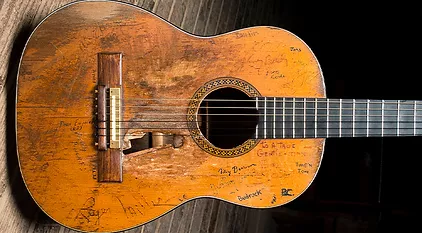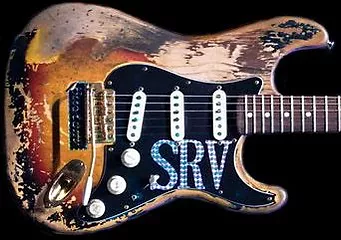Ideas – Opinions
There is a lot of money and energy out there to get a guitar to look old and road torn.
If you’re in that camp, I could only guess what it means to ‘pretend’ you’ve been gigging everywhere and have beaten that guitar up. Not judging, but I am too practical for this line of thinking. We see them come out of the factory pre-worn, chipped, scratched, worn paint, etc.
If that is your thing then a rock guitar may be a good choice, because honestly, when people see road worn guitars now, … ahem… we all know it could be a week old. Sorry, it’s a thing!

1969 Martin N-20 Brazilian Rosewood – Spruce top

1963 Fender Stratocaster body 1962 Strat neck
To many of us, (I hope) we are attracted to the concept of ‘authentic’
Stevie Ray Vaughan truly wore his axe out. Willie Nelson’s ‘Trigger’ (a Martin N-20) has a hole worn right through the wood just along aside the sound hole. https://youtu.be/b6IB0trJoJU , this is from playing through the wood. So, if you don’t have the patience to play hard for 40 or 50 years to wear through the wood of your guitar, maybe playing one made of rock (just looks that way) will add a different vibe all together.
Eddie!
No, not EddieA – The Great One Eddie Van Halen!
If you are a Eddie Van Halen fan. (and who isn’t) There is a great article in Guitar World ‘Eddie Van Halen in his own words’
I really enjoyed this by the Guitar World editors
They broke it down to segments. You know like one of those books filled with wisdom, but only by single page. As opposed to, hours of reading, after you wake up you must read it all again, after you wake up again… you get it.
So Check it out in Guitar World Magazine or online. They also run Guitarist – Total Guitar – Guitar Techniques and Bass Player. Here at Rockguitars.com you’ll find
Guitartist® Guitartistry®
As I do artwork on guitars, But I’m no writer Now for spell check!
EddieA
The Treasure Chest
There is a great piece written by Chris Vinnicombe on the collection of Martin Kelly and Hylander. They are avid collectors of vintage Fender guitars. It was fascinating how the article sees how the hotrod culture and surfer culture influenced the Fender Guitars. Also the retired auto designer Ray Dietrich was consulting Gibson to make their way into the solid body market. Colors of the Firebird and Pontiacs, Buicks and Oldsmobiles were finding their way to the guitars. For an additional 5 percent the DuPont Duco colors were of the player’s choice. This for custom finishes on Fenders dated since the early 1950’s.
If you know Fenders, you’ll know the name Martin Kelly. His filmmaker brother Paul and Terry Foster who was a guitar historian and author of Fender: The Golden Age 1946-1970. Phil Hylander, a fan who made the documentary ‘Seven Decades’ bonded with Martin over vintage guitars and is working on a Rickenbacker book as well. As a youngster Martin couldn’t afford a Fender at £500-600 where Vox guitars were £80 or £100 for a Teardrop or Phantom. Decades later when clear coats were used, the color changed with fading and the discoloration of the clear coats, changed the distinction and made it harder to differentiate between the early classic Surf and Foam Green, Sonic Blue and became similar
to the Daphne Blue. Not all custom colors had a clear coat. So Daphne Blue became more rare than Sonic blue. The Sonic Blue Fenders were just very popular and drew a high price like Fiesta Red. Martin claims they had that ‘milkiness’ Later Roman Red and Flamingo Pink maple neck Stratocaster. 1950’s custom colors are very rare because Fender did not standardize yet. Much more info on the article as it is long and in depth. Check it out. At guitar dot com site

